Project details
Skill
Cost
Estimated Time
A glass-fronted shadow box can give your collectibles a worthy display space, safe from the dust of the attic.
In this guide, we’ll walk you through how to build a shadow box using reclaimed wood from an old door. In the video, This Old House host Kevin O’Connor and general contractor Tom Silva show you step by step.
Tools and Materials Required
Before you begin, gather the following materials:
- Old wooden door or reclaimed wood
- Glass sheet
- Wood glue
- Screws
- Sandpaper (220-grit)
- Danish oil or other wood finish
- Cutting oil
You’ll also need several tools, including:
- Circular saw
- Table saw
- Miter saw
- Random orbit sander
- Brad nailer
- Glass cutter
- Drill/driver
- Bar clamps
- Strap clamps
- Pocket knife
- Spray bottle
Safety equipment such as gloves and eye protection is necessary when working with wood and glass. Also, remember to check if the wood contains lead paint, as removing it will require careful steps.
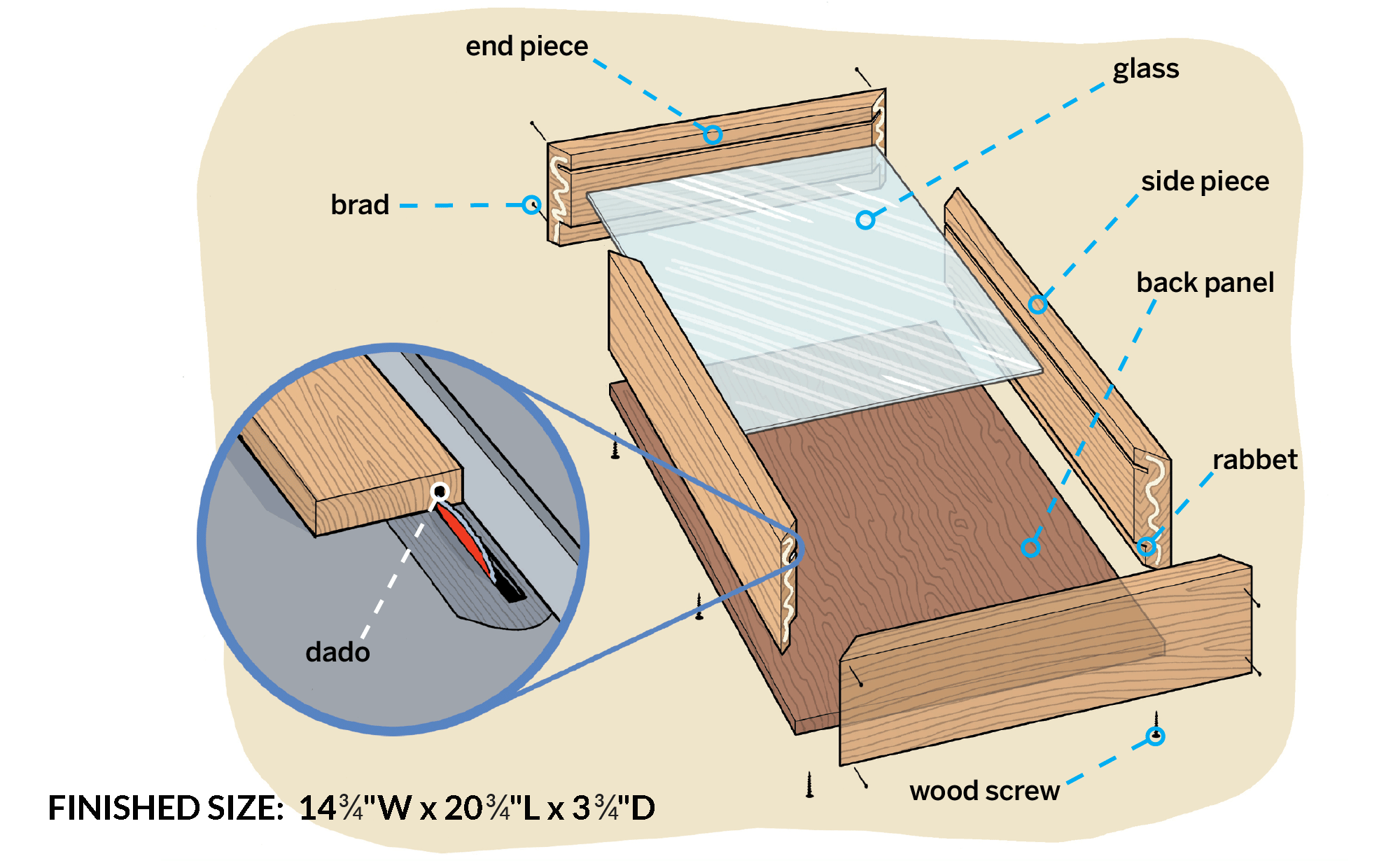
Preparing the Wood
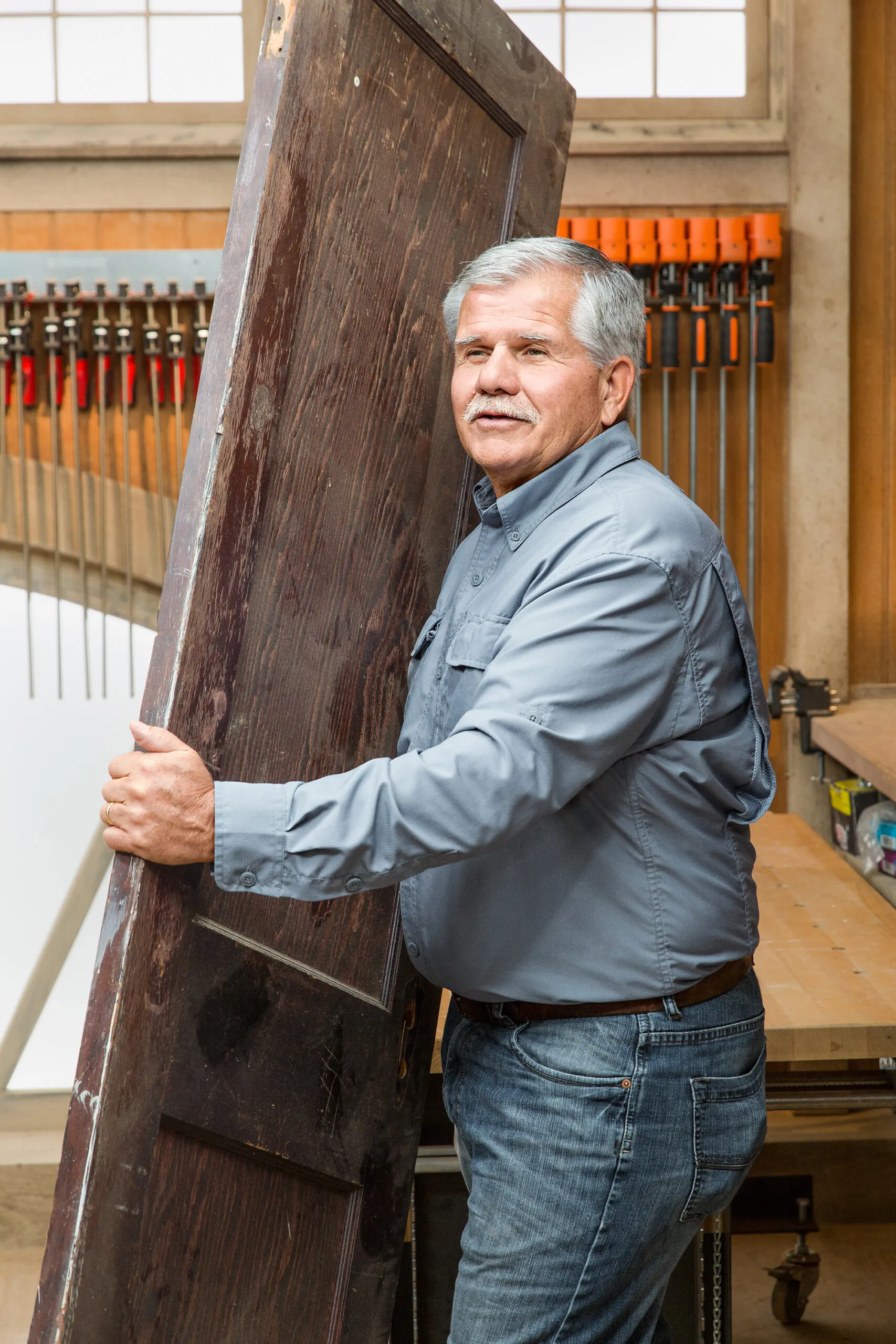
Here’s how to get started:
- Select an old door or piece of reclaimed wood. Look for straight-grain fir or another stable wood type.
- Cut the door into usable pieces using a circular saw, making sure all cuts are accurate so the pieces fit together well.
Tom recommends using the door stiles (vertical pieces) for the shadow box frame, as they often have the best quality wood.
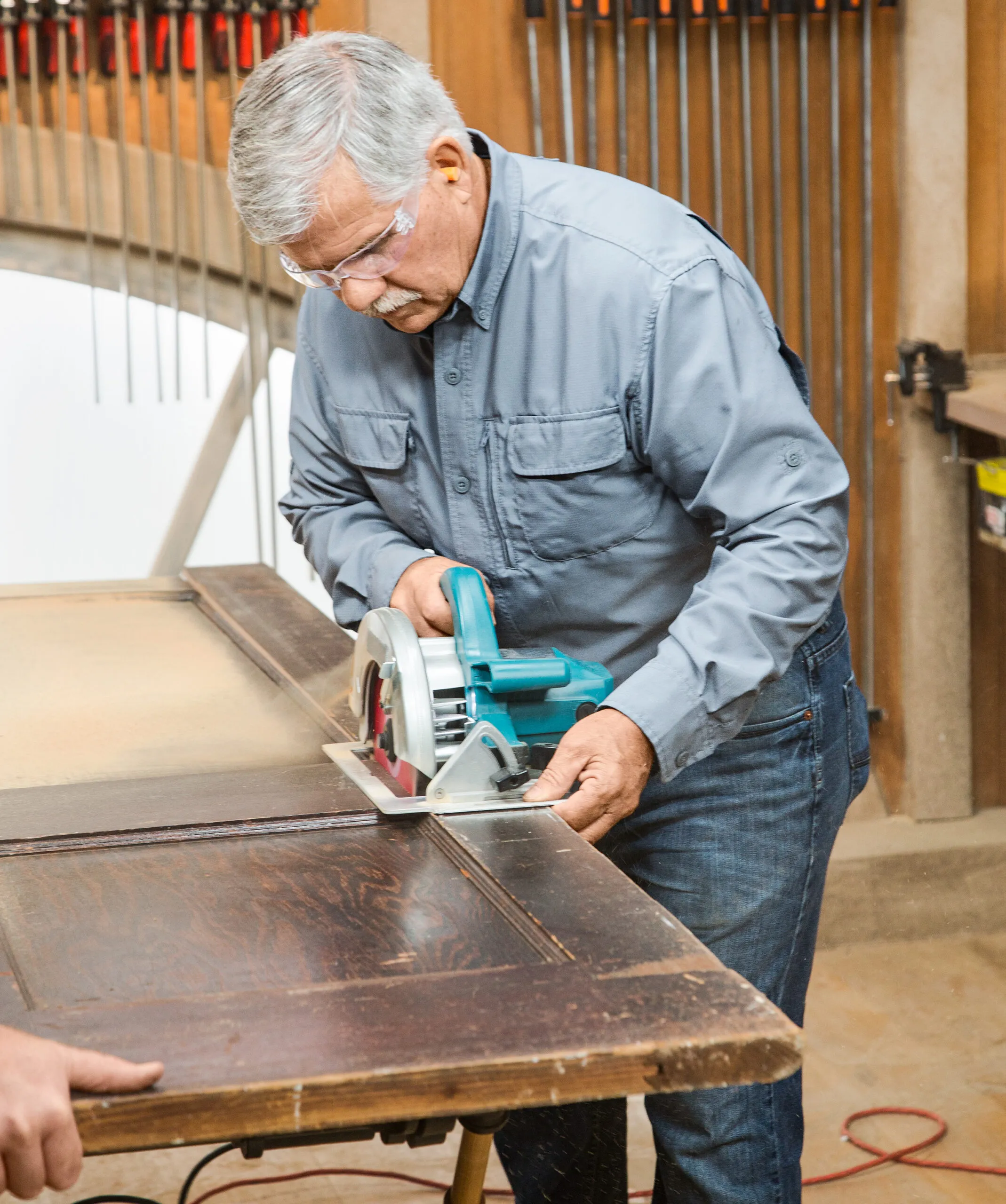
Next, true up the edges of the wood pieces on a table saw. Make light passes with the table saw blade to remove any old finish or stain.
Remember to test the paint for lead. If the piece you are working on does contain lead, you cannot use the above method to remove any old finish.
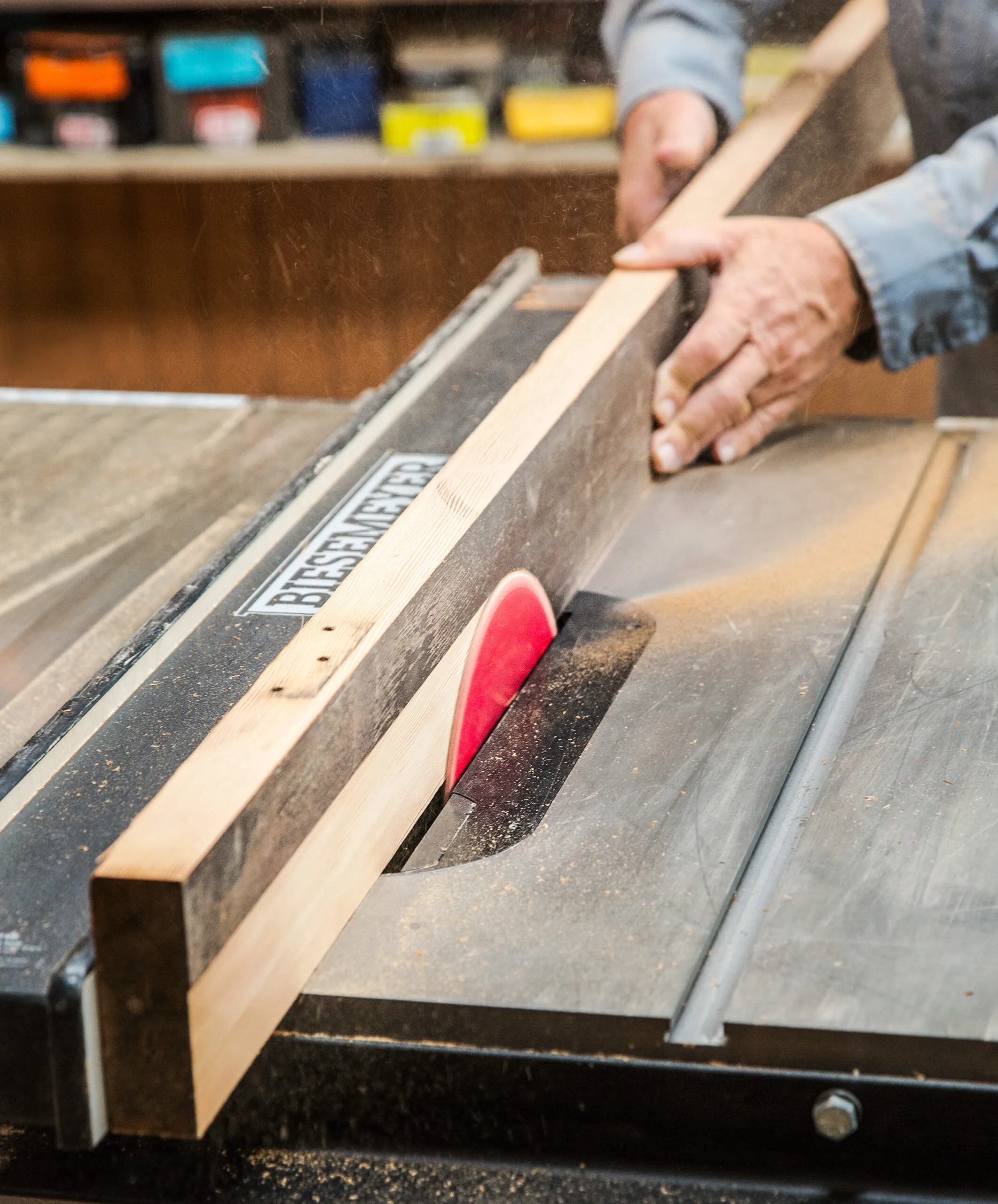
Cutting and Shaping the Frame
Once you have your wood prepared, it’s time to cut and shape the frame pieces:
- Cut the rabbets: Use a table saw to cut a 1/2-inch by 1/2-inch rabbet in one corner of each frame piece. This will hold the back panel of the shadow box.
- Cut the dadoes: Cut a 1/8-inch wide, 1/2-inch deep dado 1/4 inch from the side opposite the rabbet. This groove will hold the glass in place.
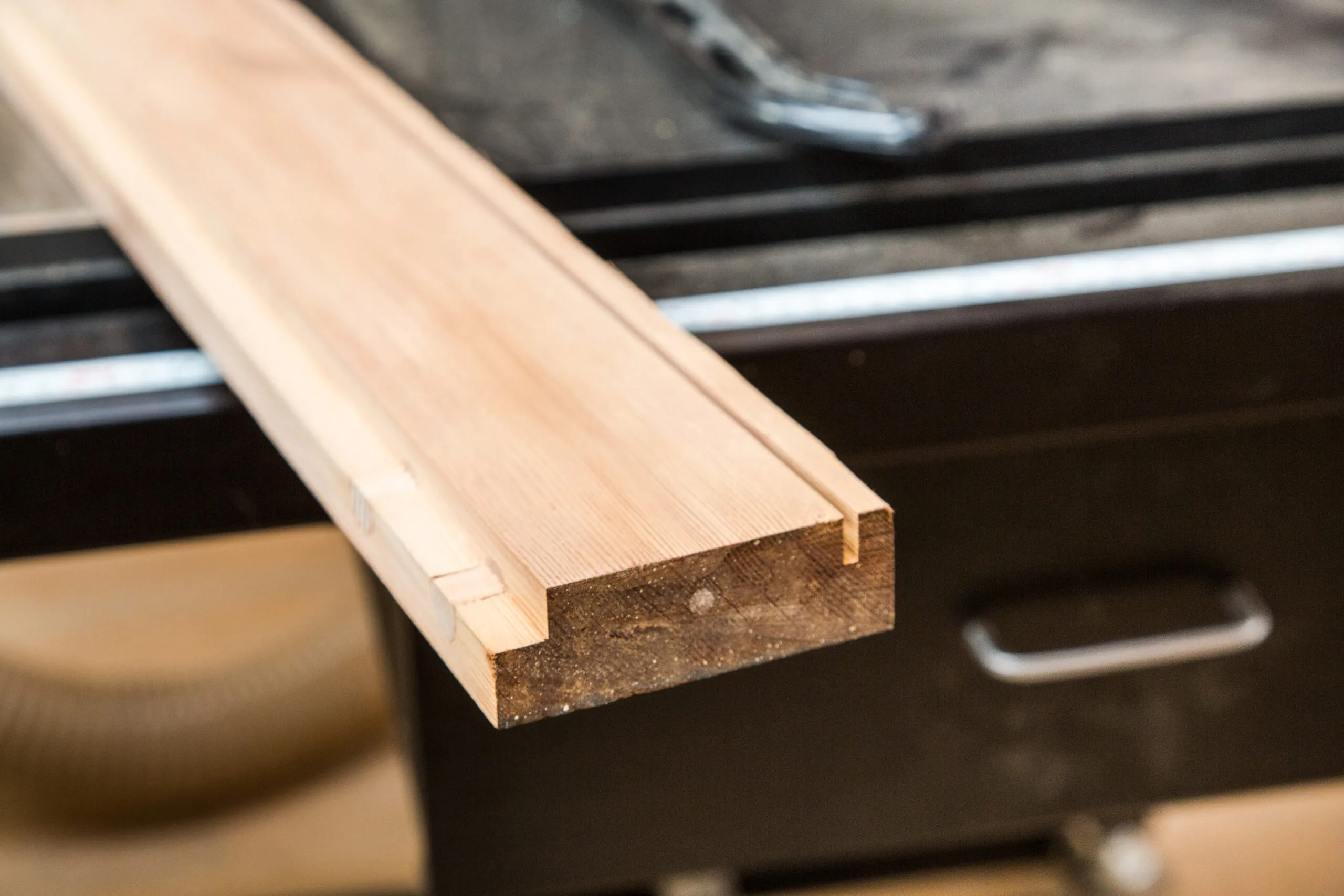
Next, sand all sides of the frame pieces with 220-grit sandpaper using a random-orbit sander to smooth out any rough edges or surfaces.
Save the sawdust for the next step. Then sand the finish off one face of the panel, as shown. Start with 180-grit sandpaper, and finish with 220.
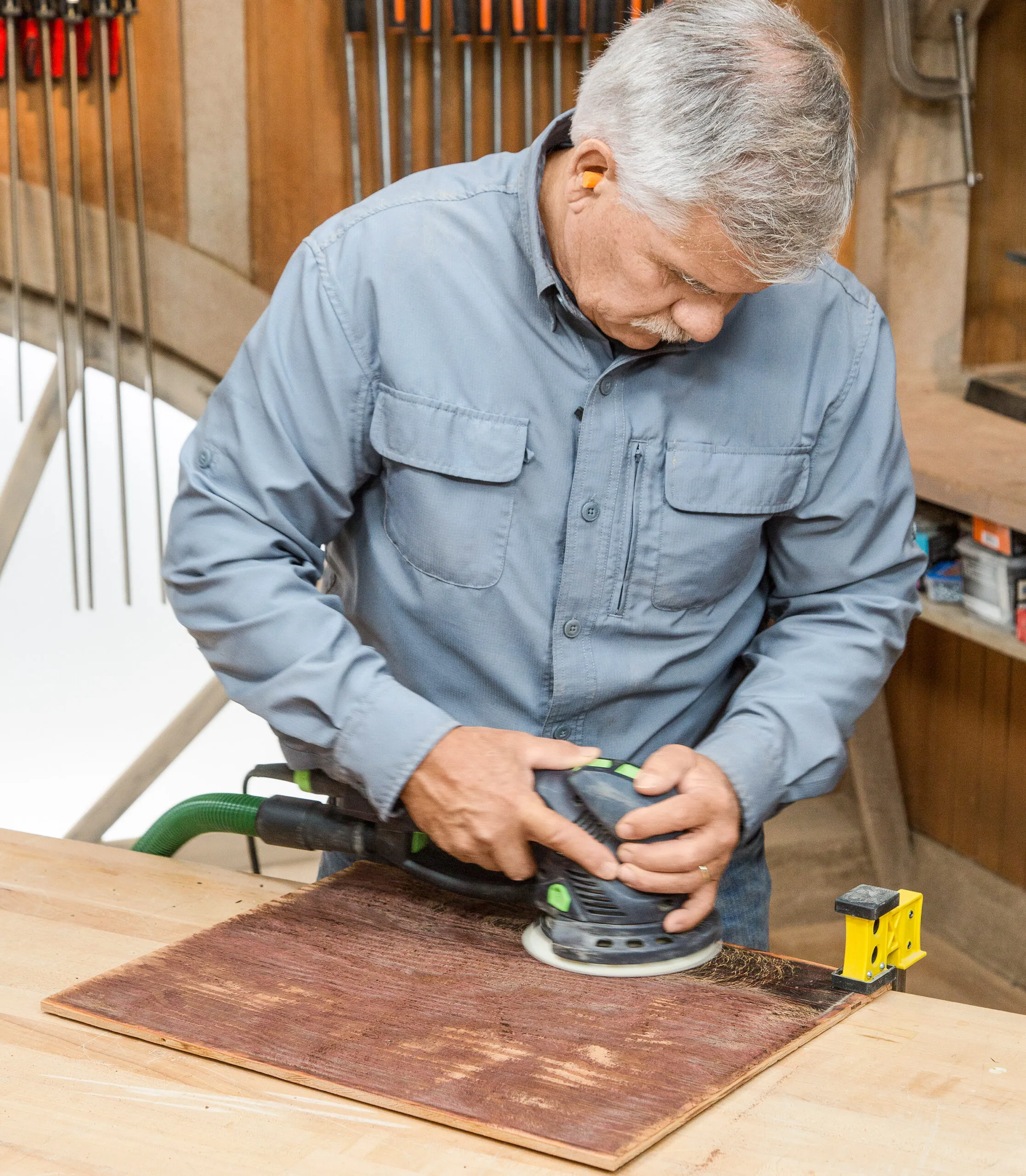
Next:
- Whittle a scrap piece of wood from the stile into a stick narrow enough to fit in the holes left by the hinge screws.
- Squeeze wood glue into the holes
- Insert the whittled stick and slice it off flush with a knife.
- Use the sawdust saved earlier to color the glue

This step creates a color-matched filler, making the repaired areas less noticeable.
Finishing the Wood
Before assembling the frame, apply a finish to protect the wood and enhance its natural beauty:
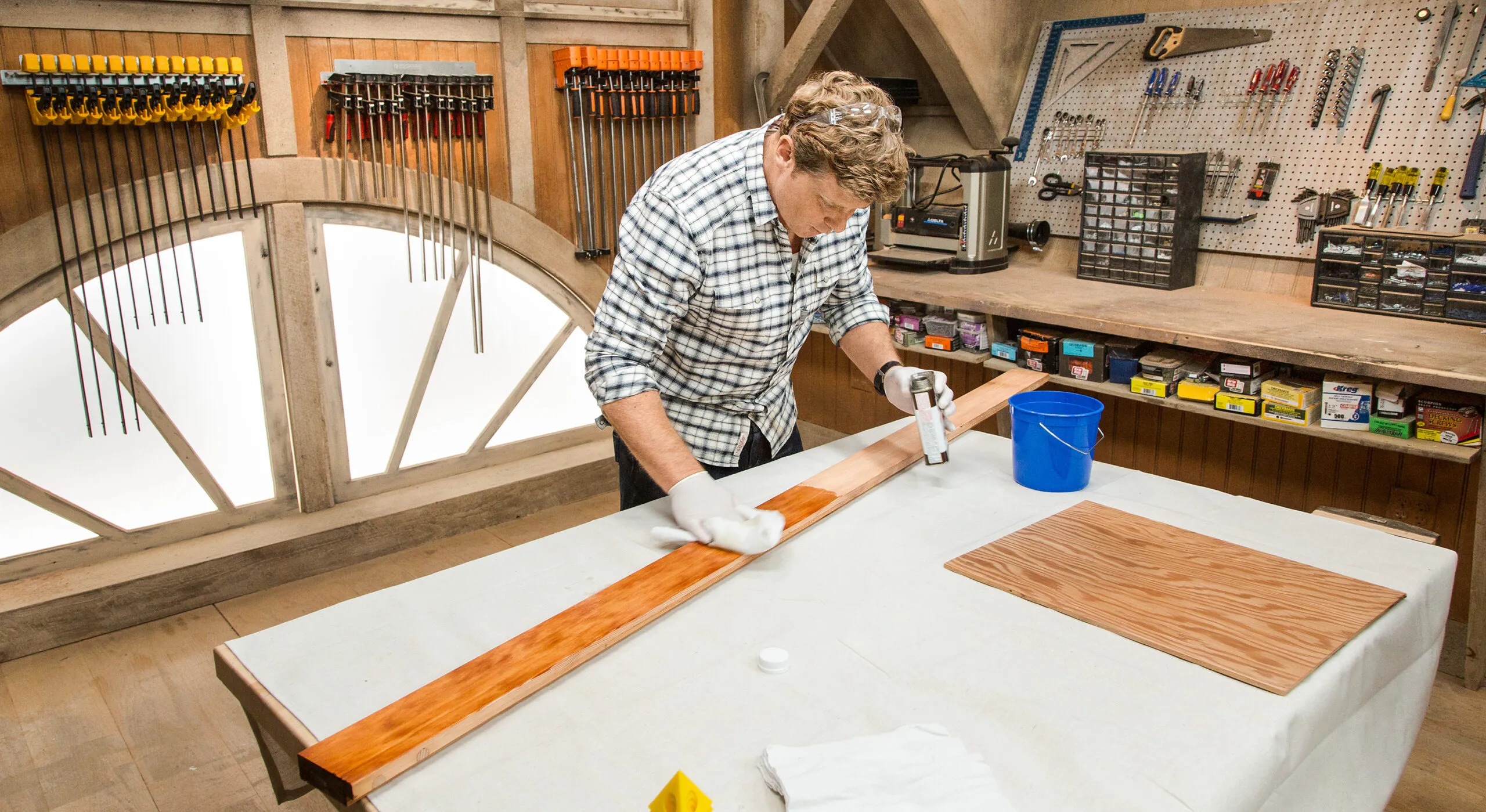
First, clean all wood pieces with a tack cloth to remove dust. Then, apply a penetrating finish, such as Danish oil, to all sides of the frame pieces and the sanded face of the back panel.
Allow the finish to soak in for 5-10 minutes, then wipe off the excess with a lint-free cloth. Let the pieces dry for at least 10 hours before handling.
Cutting and Assembling the Frame
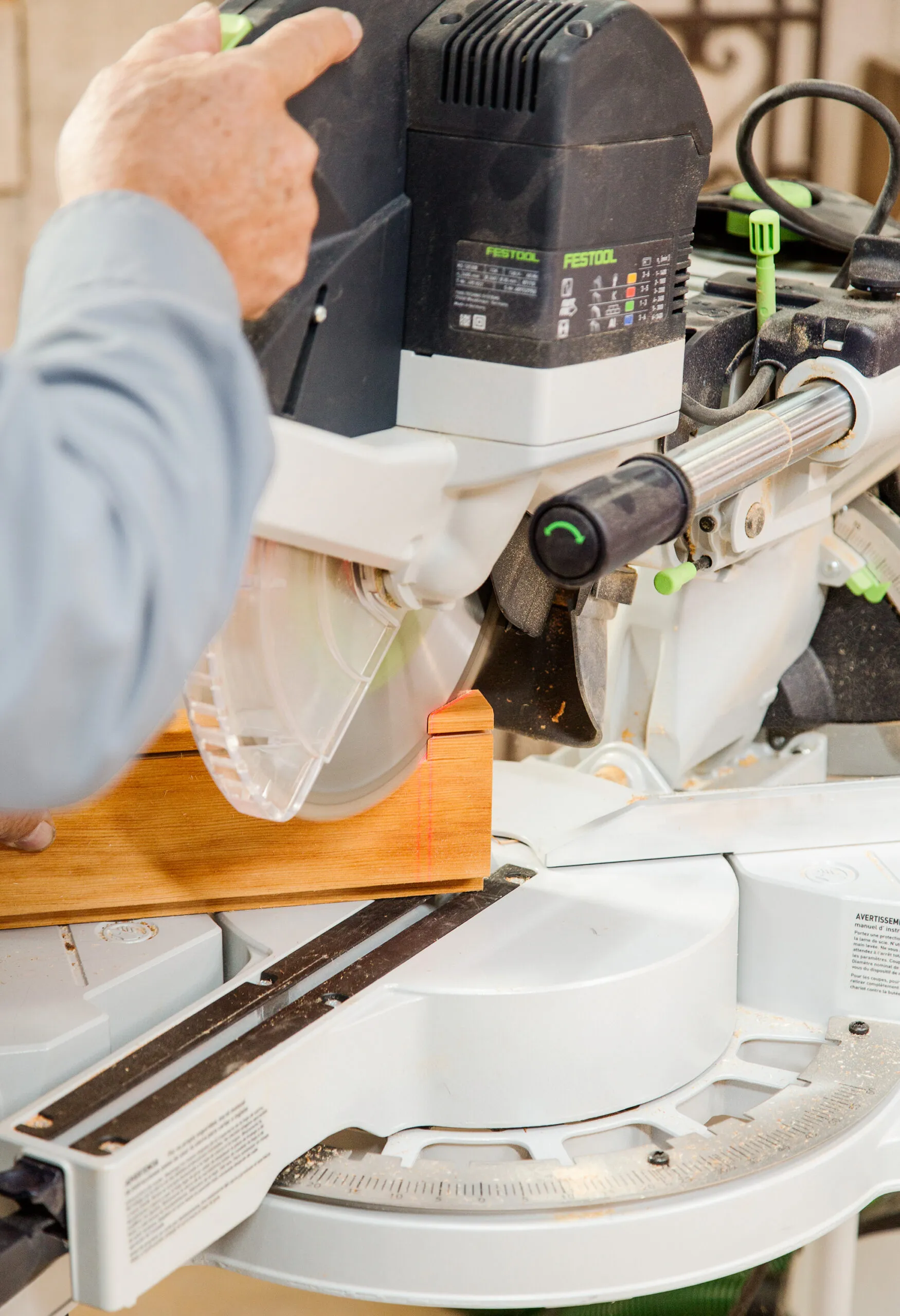
With the wood prepared and finished, you can now cut and assemble the frame:
- Cut the miters: Use a miter saw to cut 45-degree miters on all frame pieces to the desired lengths.
- Measure and cut the back panel: Measure the inside dimensions of the frame and cut the back panel to size, subtracting 1/8 inch from both dimensions to allow for seasonal wood movement.
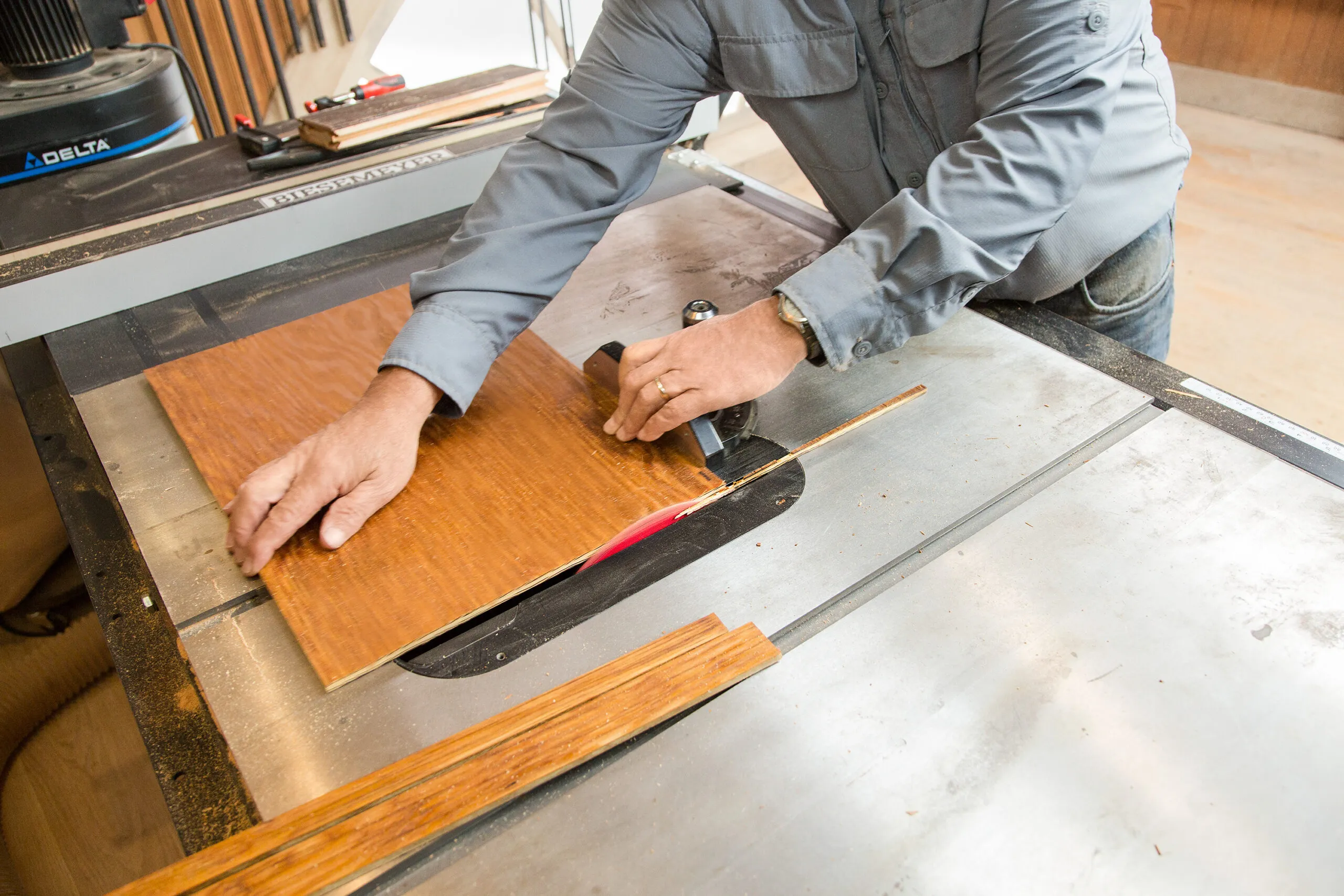
Next, squeeze glue onto both miters of a short end piece. Spread the glue evenly with a cloth. Repeat on the matching miter at one end of each long side piece.
Silva uses Clear Gorilla Glue a a hybrid, non-polyurethane adhesive for assembly, which provides a strong bond without foaming.
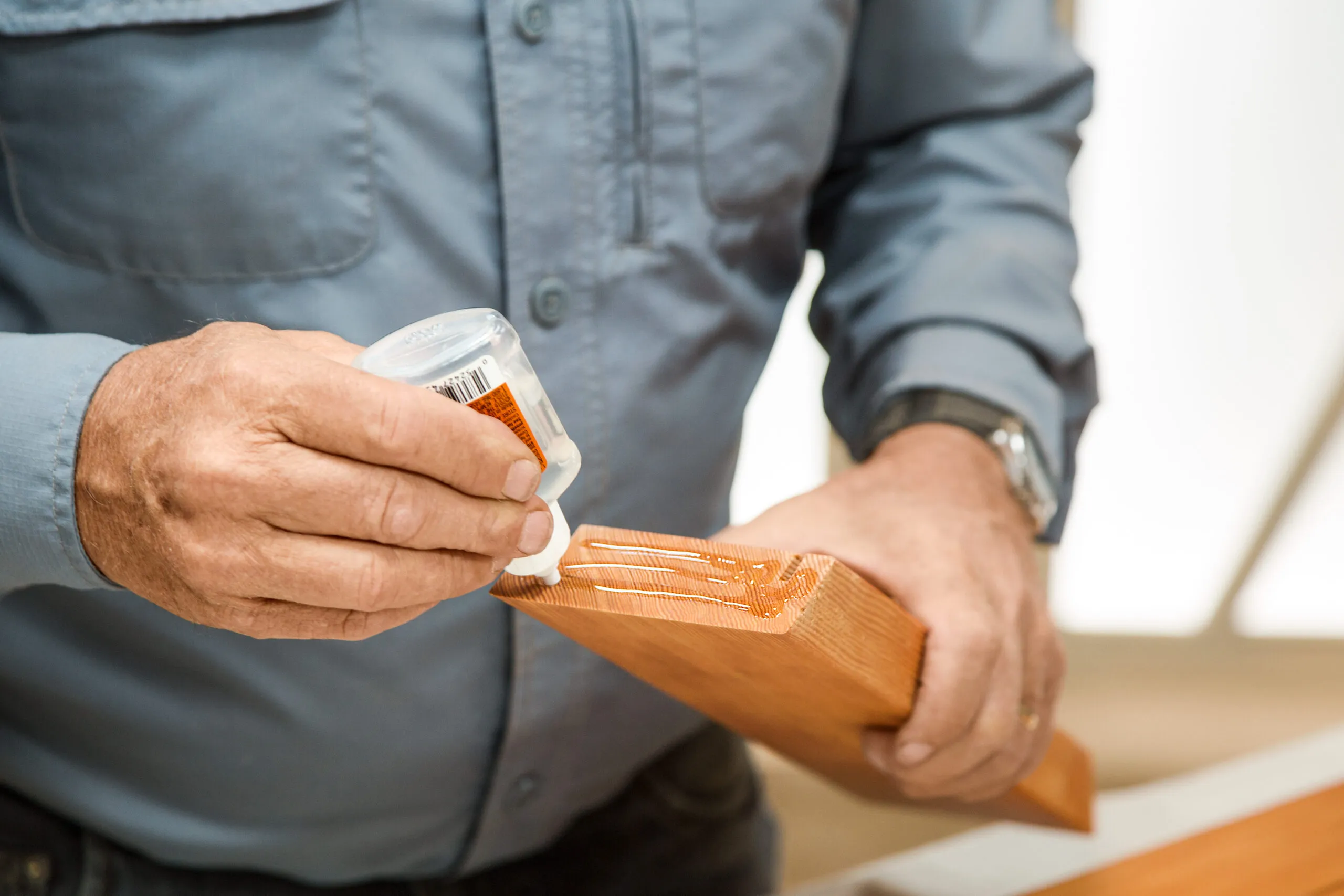
Here are some tips for working with a hybrid glue:
- Clamp it: Secure joints together for at least 2 hours as the glue cures.
- Clean it: If any glue squeezes out, wipe it up right away with a dry rag, followed by one dampened with rubbing alcohol. Unlike polyurethane glues, hybrids don’t foam up or stain skin.
- Store it: After each use, wipe the nozzle clean with a dry cloth and tightly replace the lid. Store in a cool, dry place with exposure to light. Heat and lack of light can cause the product to yellow.
Fasten the Miters
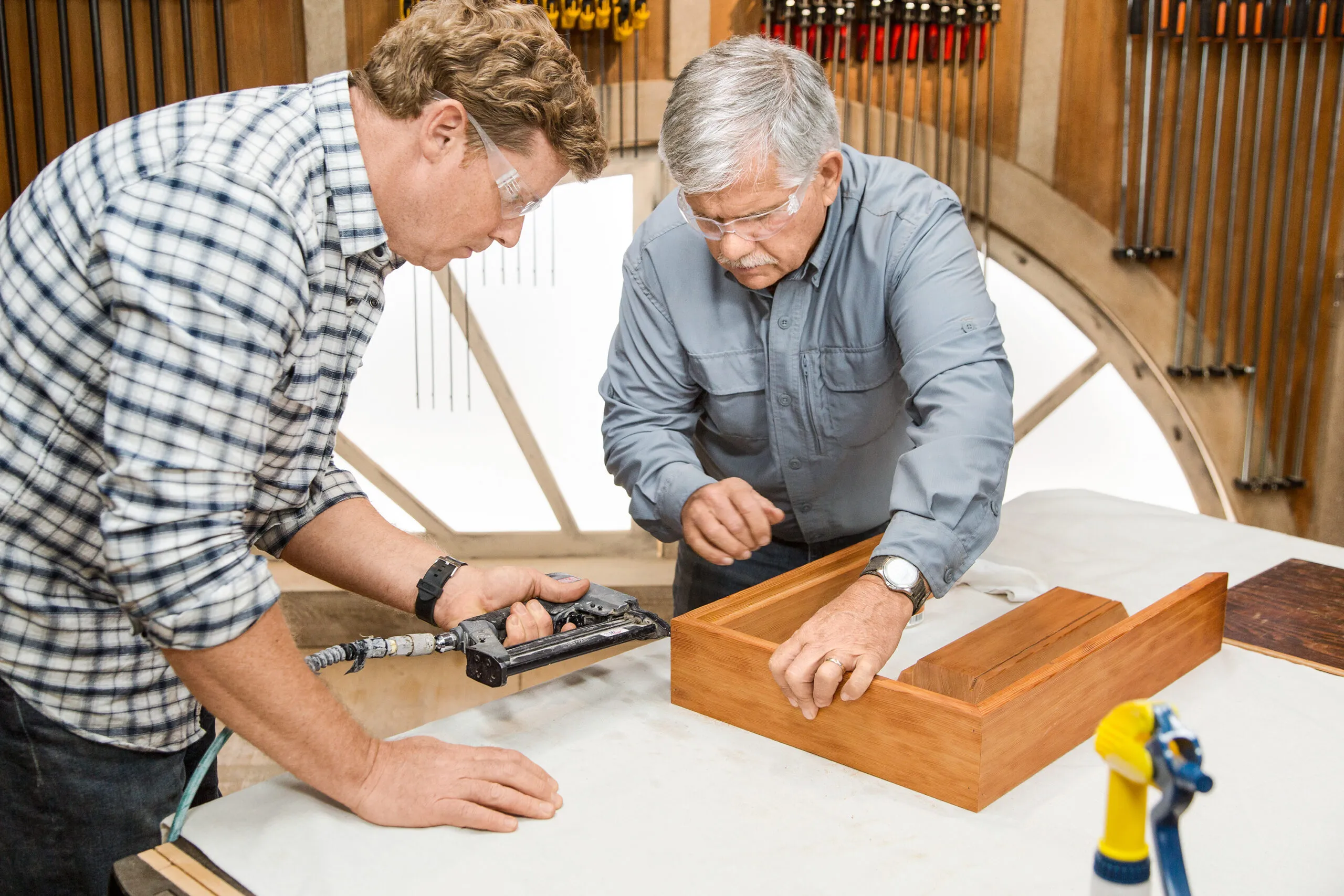
To fasten the miters:
- Fit the glued miters on the end piece against the glued miters of the two side pieces.
- Make sure the dadoes and corners line up.
- Clamp the pieces in place with two 2-inch brads shot through each side of both corners.
Remember only to assemble three sides of the frame.
Cutting and Installing the Glass
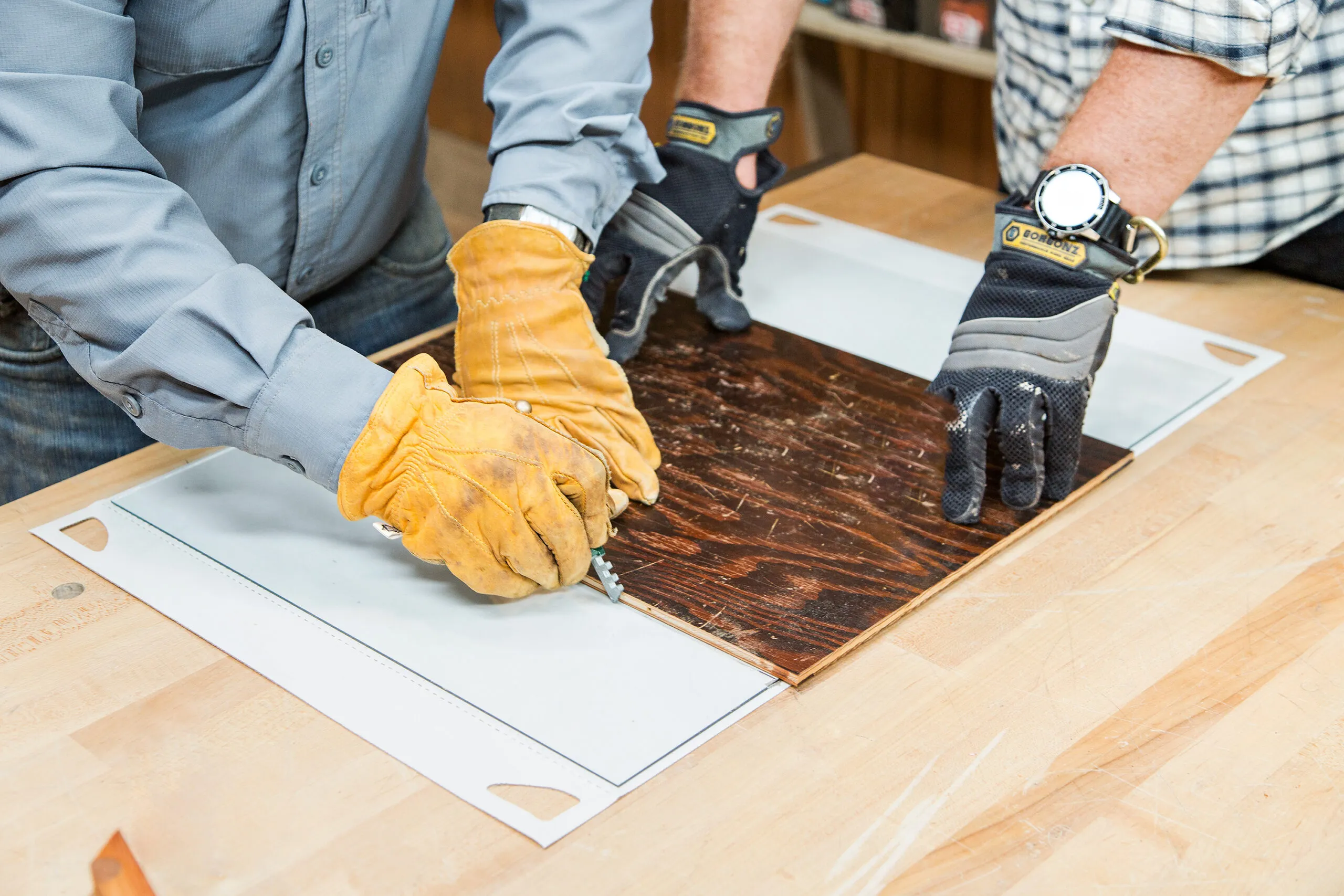
Here’s how to cut the glass:
- Use the box’s back panel as a template and mark the glass with a felt-tip marker.
- Reposition the panel as needed to guide the glass cutter. Make sure the cutter’s wheel is centered on the marks.
- While wearing gloves, dip the wheel into the cutting oil.
- Pull the cutter in one firm stroke along the panel.
Glass cutters don’t actually cut through glass. They score its surface with a tiny diamond-shaped wheel. That weakens the glass enough for it to break cleanly when it’s snapped away from the score.
Install the Glass
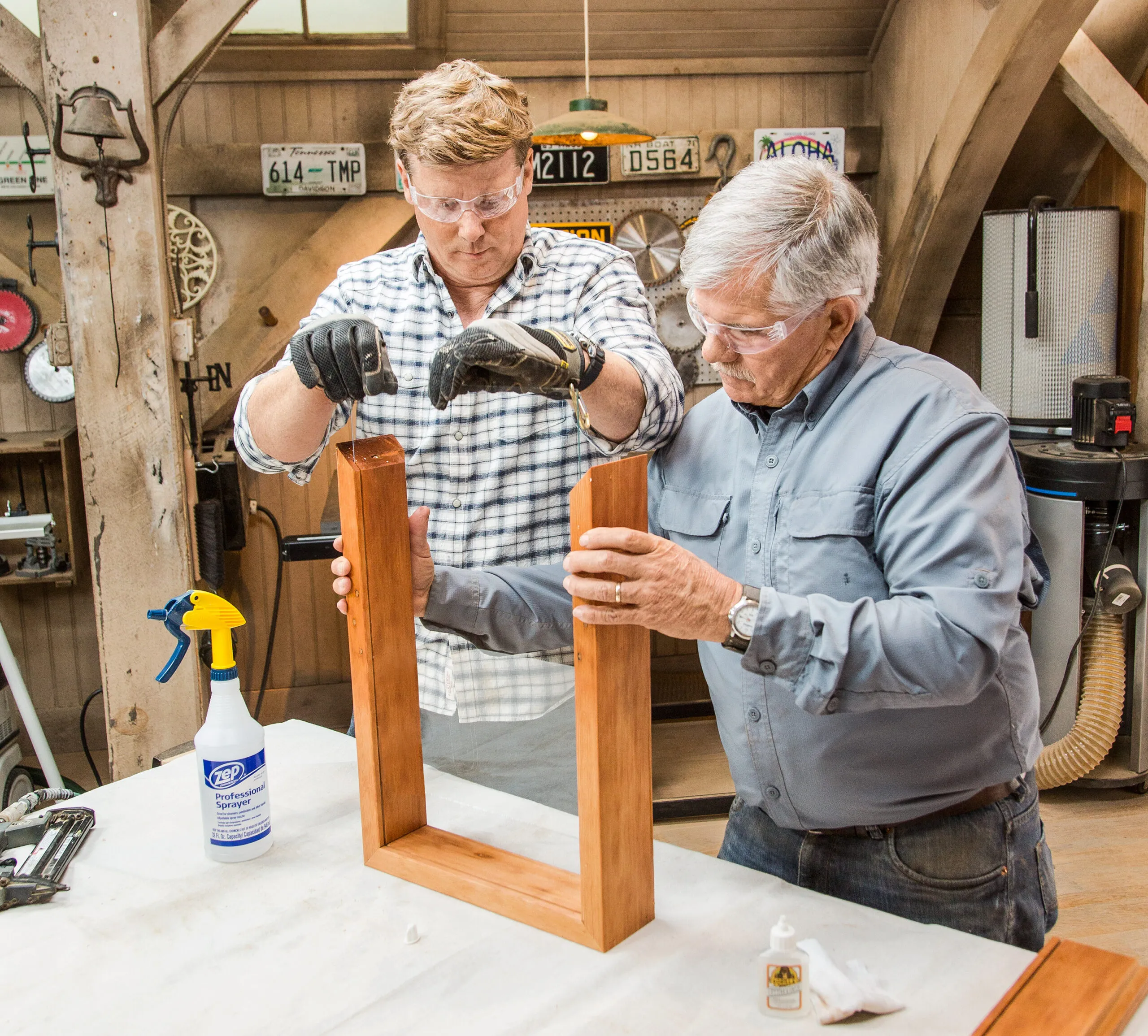
To install the glass:
- Line up the score mark on the glass with the edge of the table.
- With gloves on, lift the glass where it overhangs the table and drop it straight down.
- The glass will snap at the score, leaving a clean, straight edge.
Attach the Last Side
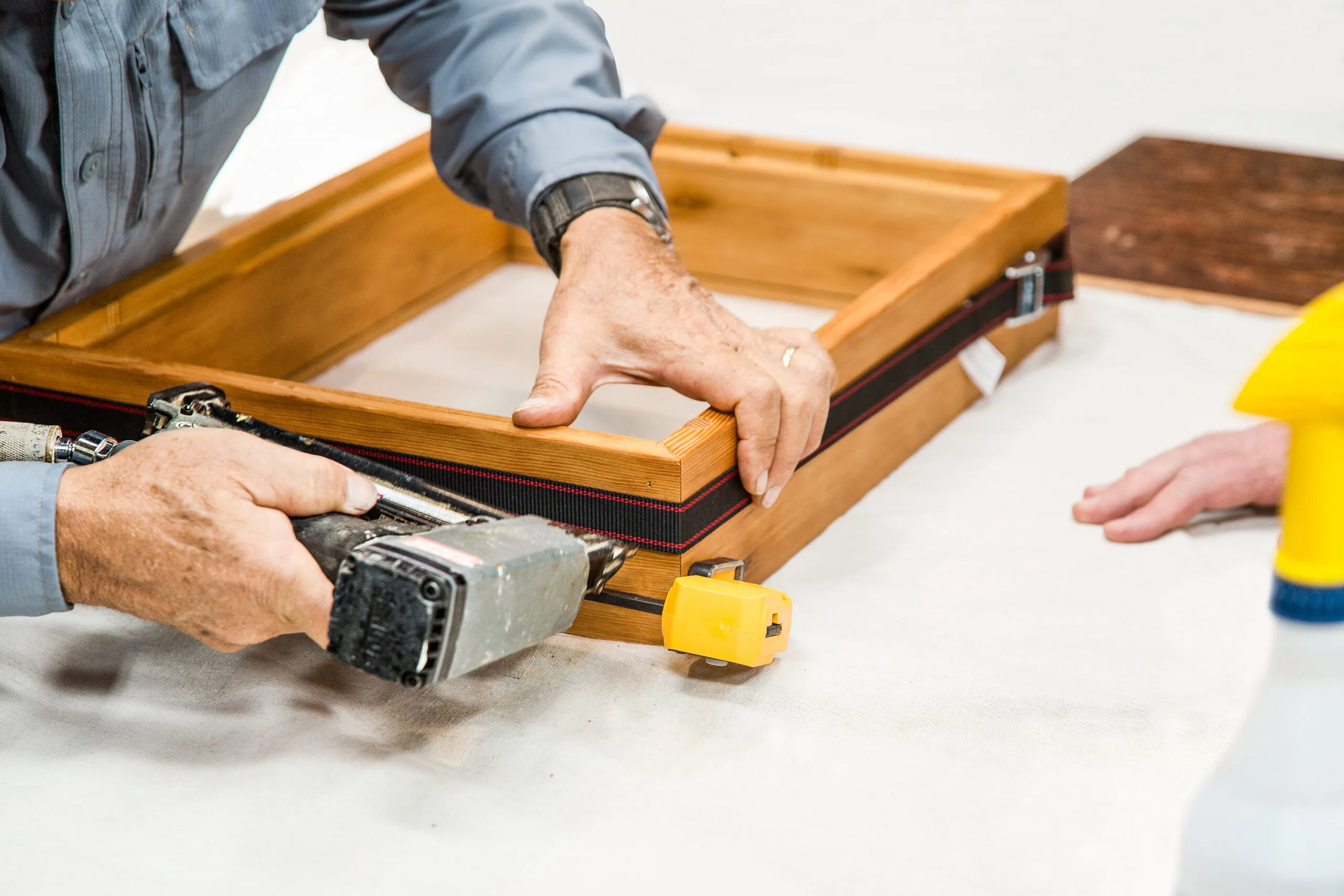
With the glass in place, glue the remaining end piece to the frame. Hold the piece in place with a strap clamp and a bar clamp, then shoot two brads on each side of both joints, as shown.
Attach the Back Panel
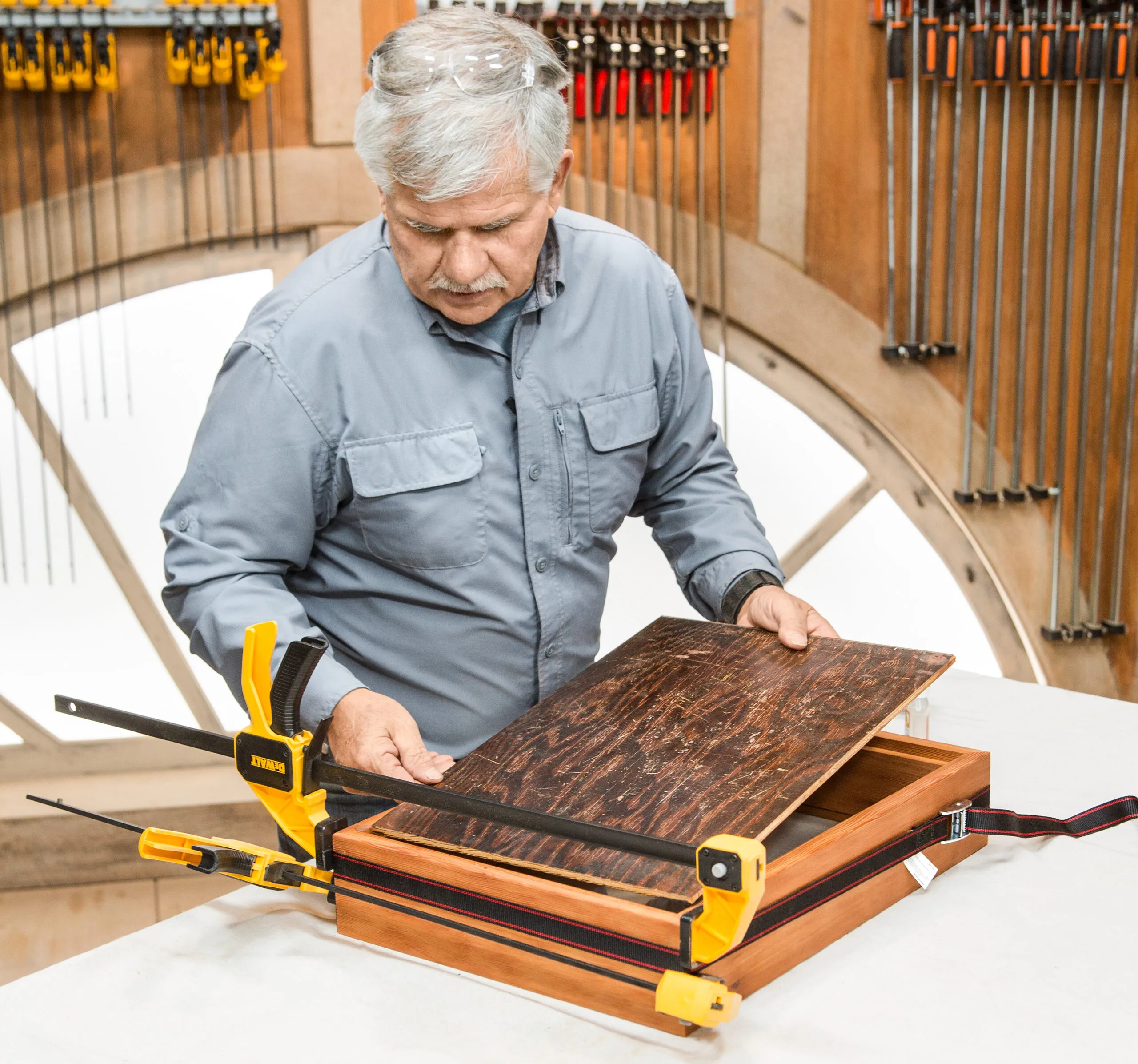
The final step in constructing your shadow box is attaching the back panel:
- Insert the back panel: Place the frame glass side down and insert the back panel.
- Drill pilot holes: Drill pilot holes through the back panel into the frame, angling the holes slightly.
- Secure the back panel with screws: Space them evenly around the perimeter to hold the back panel securely.
By attaching the back panel with screws, you can access the interior of the shadow box to change or rearrange your display items easily.
Displaying Items in Your Shadow Box
Now that your shadow box is complete, it’s time to showcase your treasured items. Here are a few tips to make your display look its best:
- Choose items thoughtfully: Select items that are meaningful or visually interesting.
- Arrange larger items first: Start with the largest items and then fill in with smaller objects to create balance.
- Secure items in place: Use small adhesive dots or museum wax to hold items securely so they don’t shift.
- Set a background: Consider using a fabric or textured paper background to enhance your display and add depth.
Remember, less is often more when it comes to shadow box displays. Avoid overcrowding to keep the focus on your most cherished pieces. The goal is to create a harmonious and engaging collection that tells a story.
Personalizing Your Shadow Box Display
Personalizing your shadow box can make it even more special. Here are a few ways to add a personal touch:
- Add labels or captions: Use small labels or captions to describe the items in your shadow box. This can add context and interest.
- Incorporate lighting: Small LED lights can highlight specific items and add a dynamic element to your display.
- Rotate items regularly: Keep your display fresh by occasionally changing the items in your shadow box. This can also give you the chance to clean the interior and keep it dust-free.
